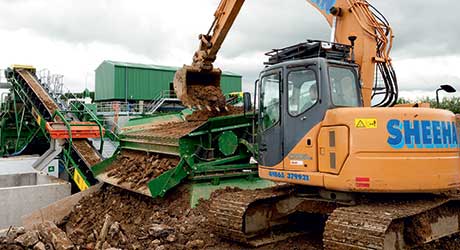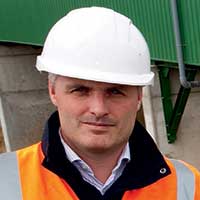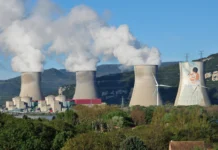
Is the construction industry really capable of achieving 70% recycling of its waste by 2020 or is it just a box ticking exercise by Brussels asks Peter Craven
THE revised Waste Framework Directive (rWFD) details that all EU Member States recycle a minimum of 70% of the waste generated from CD&E (construction, demolition and ground excavations) by the year 2020. The first reporting towards this target is expected this year and then every three years after until 2020. It is thought the UK is currently meeting this target but what obstacles stand in our way and is there an appetite for this type of product?
In the UK 20% of construction aggregates used currently come from a recycled source which represents around 40% of the total CD&E waste generated. Whilst the intent is there to meet the targets laid down by the revised directive, is this just a box-ticking exercise initiated by the powers that be in Brussels or is there a deeper agenda that would make the over-all process more effective on all levels?
The UK is well advanced in its quest to meet the targets of the rWFD and is currently number one in Europe for the volume of aggregates that come from recycled sources. However, the ability of the UK to achieve 70% will be made possible only if the planners grant permissions for more CD&E recycling installations and the cap imposed on existing materials processing plants are reviewed and raised.
In the UK, over 90 million tonnes of CD&E waste is generated each year from construction, demolition and civil engineering projects. Across Europe this figure is well in excess of 1,000 million tonnes. This represents a huge sustainable asset that can contribute greatly to the needs of the construction sector, as well as protecting much valued natural resources. But judging the output of this process on a ‘volume only’ basis is too short-sighted as there are other criteria that would be good for the industry as well as enabling the UK to recycle far in excess of the targets laid down by Brussels.
According to the Mineral Products Association, the UK is in the grip of a potential minerals famine. In mid 2012 it predicted that the UK quarry industry and the UK’s mineral producers would fail to provide enough rock, sand and gravel to supply the construction industry when demand increases. With the demand for aggregates having reached an all-time low during the economic downturn, planners have been slow to renew extraction licenses. Their fear is that when demand increases, permissions (which on average take 18 to 24 months to process) would fail to provide the resource required.
This presents a huge opportunity for the industry to process CD&E waste material into the most appropriate material with a higher value. To date, recycled CD&E material has typically been seen as a low-grade product, suitable only for general fill material and other low value uses. However, the technology now exists to be able to recycle in excess of 90% of all CD&E waste, elevating the material up the value chain and enabling it to be used for making higher value products.
By raising the quality of the material processed from recycled CD&E waste the recycling industry can provide an excellent alternative source of supply to the non-sustainable virgin supplies, which will have an end life at some point and would benefit from a supplemented supply from a recycled source.
Recycled CD&E materials are consistently good quality and can be used to manufacture construction industry products. Recycled aggregates are now being used in the mixing of ready-mixed concrete and the production of high-quality concrete products. The water used in the washing process of CD&E recycling can also be recycled, with over 90% being retained using a closed water system, reducing the need for fresh supplies.

To date, a large proportion of planners have dragged their heels on granting permissions for the construction of facilities capable of recycling CD&E waste. Why? Well one possibility is that they do not fully understand the technological advances that are happening within the recycling industry. So by getting this message out and ensuring eyes are wide open about how the industry is evolving and changing, we can make more use of this sustainable resource and tick a few more green boxes in the process with a more meaningful recycling agenda being agreed upon.
Peter Craven is head of marketing and sales support at CDE Global, a manufacturer of quarry and mining equipment.







